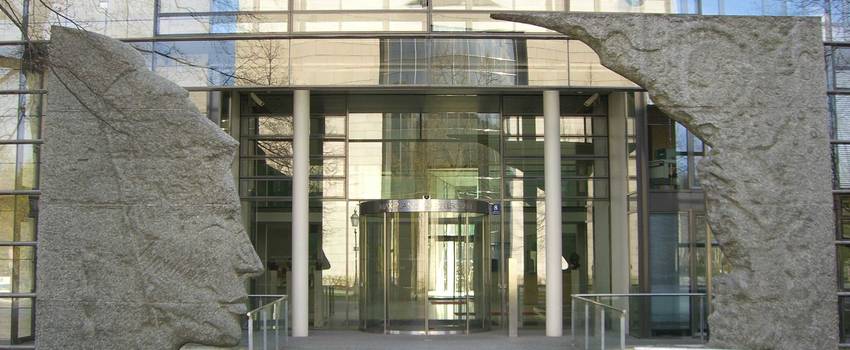Wieland B. Huttner Which Evolutionary Changes in the Genome Led to the Development of the Large-Sized Human Brain?
Wieland B. Huttner is Director at the Max Planck Institute of Molecular Cell Biology and Genetics in Dresden and Honorary Professor of Neurobiology at Technische Universität Dresden, Germany. He is also the speaker of the International Max Planck Research School IMPRS-CellDevoSys. Having an educational background in medicine Huttner’s scientific career has been focused on how the brain works. His research interests include developmental neurobiology and the evolution of the neocortex. Huttner is an elected member of the German National Academy of Sciences Leopoldina and the European Molecular Biology Organization (EMBO). He also served on the German Council of Science and Humanities from 2004 until 2010.
Area of Research
Molecular Neurobiology
since 1998
Director
Max Planck Society (more details)
Max Planck Institute of Molecular Cell Biology and Genetics
1991-2000
Professor of Neurobiology
Heidelberg University (Ruprecht-Karls-Universität Heidelberg)
Institute of Neurobiology
1985-1990
Group Leader
EMBL Cell Biology Programme
1981-1985
1977-1980
Postdoc
Yale University
Department of Pharmacology
1976-1977
1985
Habilitation in Physiological Chemistry
University of Würzburg (Julius-Maximilians-Universität Würzburg)
1972-1976
Doctoral Thesis in Physiological Chemistry
University of Hamburg (Universität Hamburg)
1969-1975
Study of Medicine
University of Hamburg (Universität Hamburg)
- Editorial Board, Neural Development (2008-present)
Prizes
- Berthold Medal, German Society for Endocrinology (2003)
- Karl-Winnacker-Prize (1985)
- ERC Advanced Grant (2009-2016)
 © Maximilian Dörrbecker
© Maximilian Dörrbecker
Max Planck Society
"The Max Planck Society is Germany's most successful research organization. Since its establishment in 1948, no fewer than 18 Nobel laureates have emerged from the ranks of its scientists, putting it on a par with the best and most prestigious research institutions worldwide. The more than 15,000 publications each year in internationally renowned scientific journals are proof of the outstanding research work conducted at Max Planck Institutes – and many of those articles are among the most-cited publications in the relevant field." (Source)
Institute
Max Planck Institute of Molecular Cell Biology and Genetics
"How do cells form tissues? How do tissues form organisms? Cell and developmental biologists at the Max Planck Institute of Molecular Cell Biology and Genetics in Dresden devote their research to discovering how cell division and cell differentiation work, which structures can be found in cell organelles and how cells exchange information and materials. Physical processes play an important role here; processes which, for instance, influence the movement of molecular motors, such as actin and myosin. Model organisms like the fruit fly, zebrafish, roundworm or mouse help the 25 research groups to find answers to the very basic questions of life. Often, this research includes investigating diseases like diabetes, cancer, Alzheimer's Disease or retinal degeneration." (Source)
Map
During the evolution of primates their brain size, and specifically the size of their cerebral cortex where the higher cognitive functions are located, expanded. Stem cells in the human brain go through a higher number of cell divisions and thus produce a higher number of neurons then do stem cells in the brains of apes. The research presented in this video investigates which evolutionary changes in the genome caused this increase in cell division. WIELAND HUTTNER describes how the research group isolated the relevant human-specific stem cells and, using a new method devised by the group, studied which genes were particularly highly expressed in those cells. The gene with the highest specificity of expression, AHRGAP11B, was introduced in mouse embryos. The results indicate that this gene is indeed responsible for an increase in cell division. Furthermore, in about half of the mouse embryos, the brain started to fold – a feature that is particularly prominent in species with enlarged brains.
LT Video Publication DOI: https://doi.org/10.21036/LTPUB10360
Human-Specific Gene ARHGAP11B Promotes Basal Progenitor Amplification and Neocortex Expansion
- Marta Florio, Mareike Albert, Elena Taverna, Takashi Namba, Kay Prüfer, Janet Kelso, Ronald Naumann, Ina Nüsslein, Andreas Dahl, Robert Lachmann, Svante Pääbo and Wieland B. Huttner
- Science
- Published in 2015









